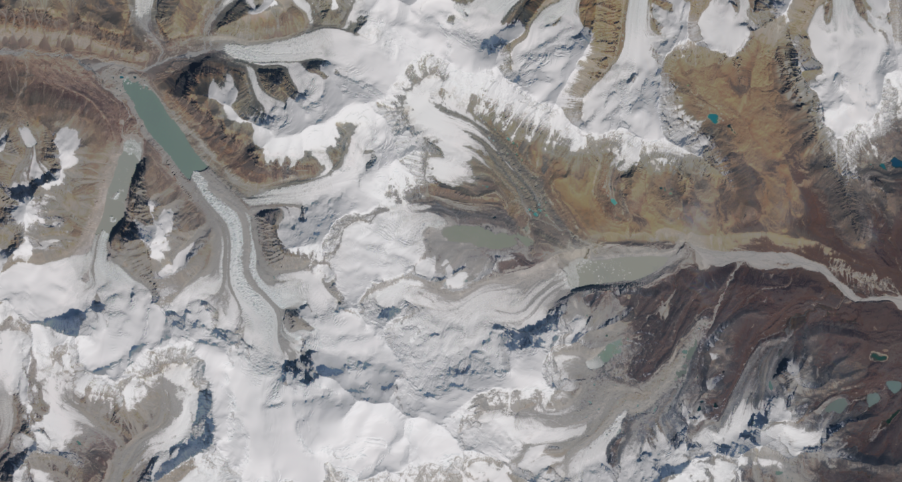
Lead supervisor: Maximillian Van Wyk de Vries, Geography, Earth Sciences
Co-supervisor: Rebecca Dell, SPRI; Alessandro Novellino, British Geological Survey
Brief summary:
This PhD project will tackle the issue of GLOF risk by retrospectively analysing key case studies, establishing a conceptual model for lateral moraine failure, and using novel remote sensing to identify and prioritize hazard-prone glacial lakes across the Himalaya.
Importance of the area of research concerned:
Glacial lake outburst floods (GLOFs) threaten the lives and livelihoods of millions in mountainous regions, particularly in the Himalaya and Andes. Climate warming is projected to both increase the number of dangerous lakes and extend GLOF hazards to previously unaffected regions. The 2023 Sikkim flood was a devastating example of the damage GLOFs may inflict, with a landslide-triggered moraine dam breach causing over 50 casualties and inflicting lasting damage to critical infrastructure. Understanding not only the location of hazardous lakes but also the mechanisms by which they fail, is crucial to enabling effective hazard management. Achieving this requires the development of new monitoring workflows, emphasizing an interdisciplinary approach that bridges the fields of glaciology, landslide hazard, and terrestrial hydrology. This work fits within and connects the “Climate Change and Environmental Processes” and “Solid Earth and Geological Hazards” core themes of the C-CLEAR DTP.
Project summary :
This project will improve our understanding of GLOF hazard by (i) identifying active landslides in proximity to glacial lakes and, (ii) examining the mechanical processes underlying slope failure and GLOF initiation. Leveraging novel remote sensing techniques, including cloud computing and machine learning, this project will jointly monitor glacier retreat and detect adjacent deforming hillslopes. Despite the clear link between these processes, they are rarely integrated into a unified workflow and our understanding of the processes governing lateral moraine destabilization is limited. We seek an interdisciplinary-minded PhD student to draw on advances in landslide science and related disciplines to enrich our understanding of the drivers of slope failure and integrate these insights with state-of-the-art observations of glacier change and lake growth.
What will the student do?:
This PhD research comprises three closely interconnected project components:
(i) Investigate Glacier Retreat and Moraine Failure: conduct a retrospective analysis of key case studies in regions with varying rates of glacier retreat, including Patagonia, Alaska, and the Himalaya, to unravel the relationship between glacier retreat and lateral moraine failure.
(ii) Develop a Conceptual Model for Moraine Movement: construct a conceptual model of lateral moraine stability, building on landslide theory and advancements in related fields. This will provide insight into the initiation of movement and failure of lateral moraines in areas of rapid glacier retreat.
(iii) Compile a Regional Database of Active Landslide-Adjacent Glacial Lakes: we will use novel remote sensing techniques to create the first regional database of active landslide-adjacent glacial lakes across the Himalaya. This will extend and enhance existing inventories of hazardous lakes. By doing so, we can capitalize on our improved understanding of the mechanical processes related to lateral moraine destabilization and glacier retreat, and feed these results into local hazard and risk management programmes.
References - references should provide further reading about the project:
Van Wyk de Vries, M., Bhushan, S., Jacquemart, M., Deschamps-Berger, C., Berthier, E., Gascoin, S., Shean, D. E., Shugar, D. H., and Kääb, A. (2022) Pre-collapse motion of the February 2021 Chamoli rock-ice avalanche, Indian Himalaya, Natural Hazards and Earth System Sciences doi.org/10.5194/nhess-22-3309-2022
Dai C, Higman B, Lynett PJ, Jacquemart M, Howat IM, Liljedahl AK, Dufresne A, Freymueller JT, Geertsema M, Ward Jones M, Haeussler PJ. Detection and Assessment of a Large and Potentially Tsunamigenic Periglacial Landslide in Barry Arm, Alaska. Geophys Res Lett. 2020 Nov 28;47(22):e2020GL089800. doi: 10.1029/2020GL089800. Epub 2020 Nov 9. PMID: 33518831; PMCID: PMC7816221.
Van Wyk de Vries M., Wickert A., Rada C., MacGregor K., Willis M. (2022) Aypical landslide and-induced surge of a tidewater glacier. Geology. 50 (7), 806-811. doi.org/10.1130/G49854.1
Applying
You can find out about applying for this project on the Department of Geography page.